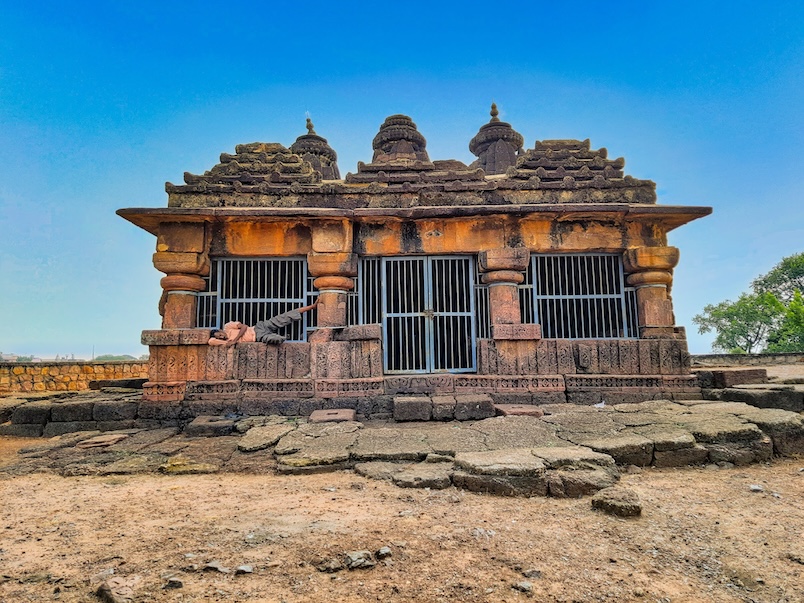Armori is a municipal council city in the Gadchiroli district of Maharashtra. The city is surrounded in the west by the Wainganga River and in the east and the south by the Gadhavi River. The district gazetteer informs that in the olden times, the city was a great entrepot for the smelted iron coming from the eastern part of the district. However, it has ceased to be such a center. In the past, the city was also known for its dhamnis, a type of country cart, sought after in great demand. Since the British period, the city has been an important center for Tussar silk.1 The Imperial Gazetteer of the British period says that Dhimars bred the Tussar silkworms in the forest of the Wairagarh and Sindewahi ranges, and silk was woven by the caste of Koskatis at Chamursi and one or two other villages. The weaving of silk-bordered cotton cloths was a considerable industry and the produce from Chanda, Chimur, and Armori were exported over a large area.2 The city has kept its association with Tussar Silk to the present day and the only Silk Sericulture Institute in the district is in Armori.
J D Beglar, an assistant of Alexander Cunningham was the first modern explorer who reported the antiquities in the town in 1878. He says the village was of small importance and the only building of interest was a temple perched on a high mound. The high mound was locally known as killah (fort) and it was the domicile of one of the village heads. Traditions ascribe the temple to Raja Hara Chandra Gond who constructed it one night. However, the temple was abandoned as installing statues was not over by sunrise. A large embanked tank to the northwest of the temple adds to its beauty.3 While Cunningham says the identity and kingdom of Raja Hara Chandra Gond could not be established, the Chandrapur Gazetteer mentions that it is possible that Cunningham meant Hir Sah who had adorned his kingdom with several fine buildings, or, he meant Harachandra God, a killedar of Wairagarh. Cousens includes Armori in his list of ancient remains in the Central Provinces, however, he follows the description provided by Beglar without adding any further details.4 The temple is not included in later studies, probably, because of its simple style, architecture, and absence of any sculptural panels.
Shiva Temple – This triple shrine temple is situated over a hilltop and faces east. It consists of three cells connected to a common mandapa (hall). The mandapa is semi-open on its lateral sides with the parapet wall raised to a third of its total height. This parapet wall has slabs projecting inside making provisions for seats and support pillars. Later, the mandapa was converted into a closed hall with open spaces filled with coarse stone blocks. Four central pillars support the ceiling of the mandapa. Half-pillars are placed over the parapet wall to provide support on the sides. The ceiling is composed of rectangular blocks arranged in an intersecting manner. The shikhara above the mandapa is of the phamsana style. The inside of the mandapa is very plain except for a Nandi statue placed over a small pedestal in front of the central shrine. The three shrines are more or less the same and allow no indication of whom those were dedicated. The outside of the temple is also devoid of any sculpture.
The jangha follows the pancha-ratha pattern with an allowance of two registers separated by a bandhana molding. The height of the shikhara of the three shrines is equal and all are built in simple latina mode of the nagara order. As a Shivalinga is installed inside the central shrine, the temple is considered dedicated to Shiva. Whether it was dedicated to the Hindu trinity of Brahma, Shiva, and Vishnu or the members of the Shiva family cannot be ascertained. The dating of the temple can only be done using stylistic and architectural practices of the region during the Seuna (Yadavs of Devagiri) period.
1 Gazetteer of India, Maharashtra State Gazetteers, Chandrapur District. pp. 736-737
2 1908. The Imperial Gazetteer of India, vol. X, Central Provinces to Coompta. The Clarendon Press. Oxford. p. 157
3 Beglar, J D (1878). Report of a Tour in Bundelkhand and Malwa, 1871-72; and in the Central Provinces, 1873-74, vol. VII. The Office of the Superintendent of Government Printing. Calcutta. pp. 125-126
4 Cousens, Henry (1897). Lists of Antiquarian Remains in the Central Provinces and Berar. The Office of the Superintendent of Government Printing. Calcutta. p. 14
Acknowledgment: Some of the photos above are in CC0 1.0 Universal Public Domain from the collection released by the Tapesh Yadav Foundation for Indian Heritage.

